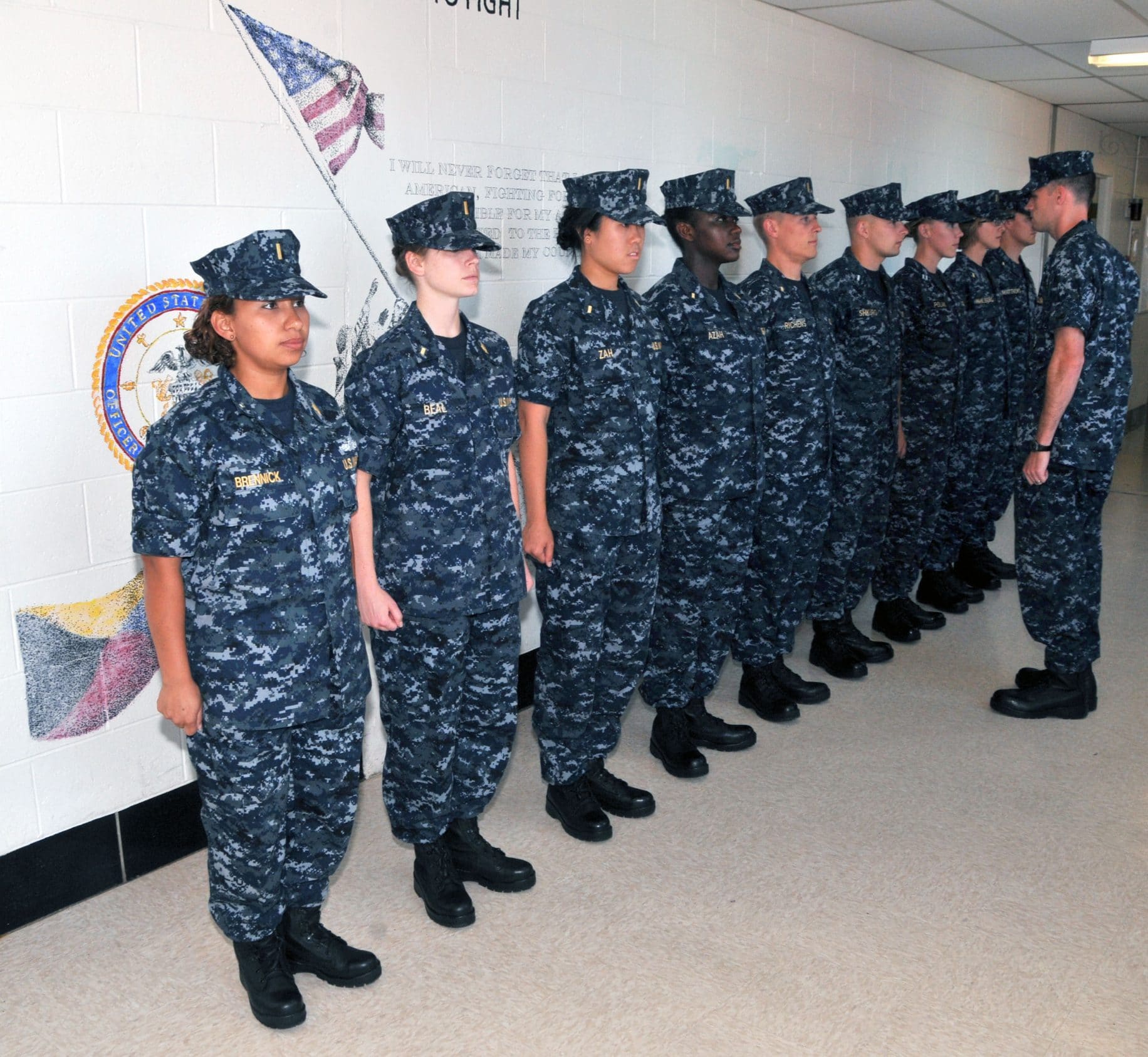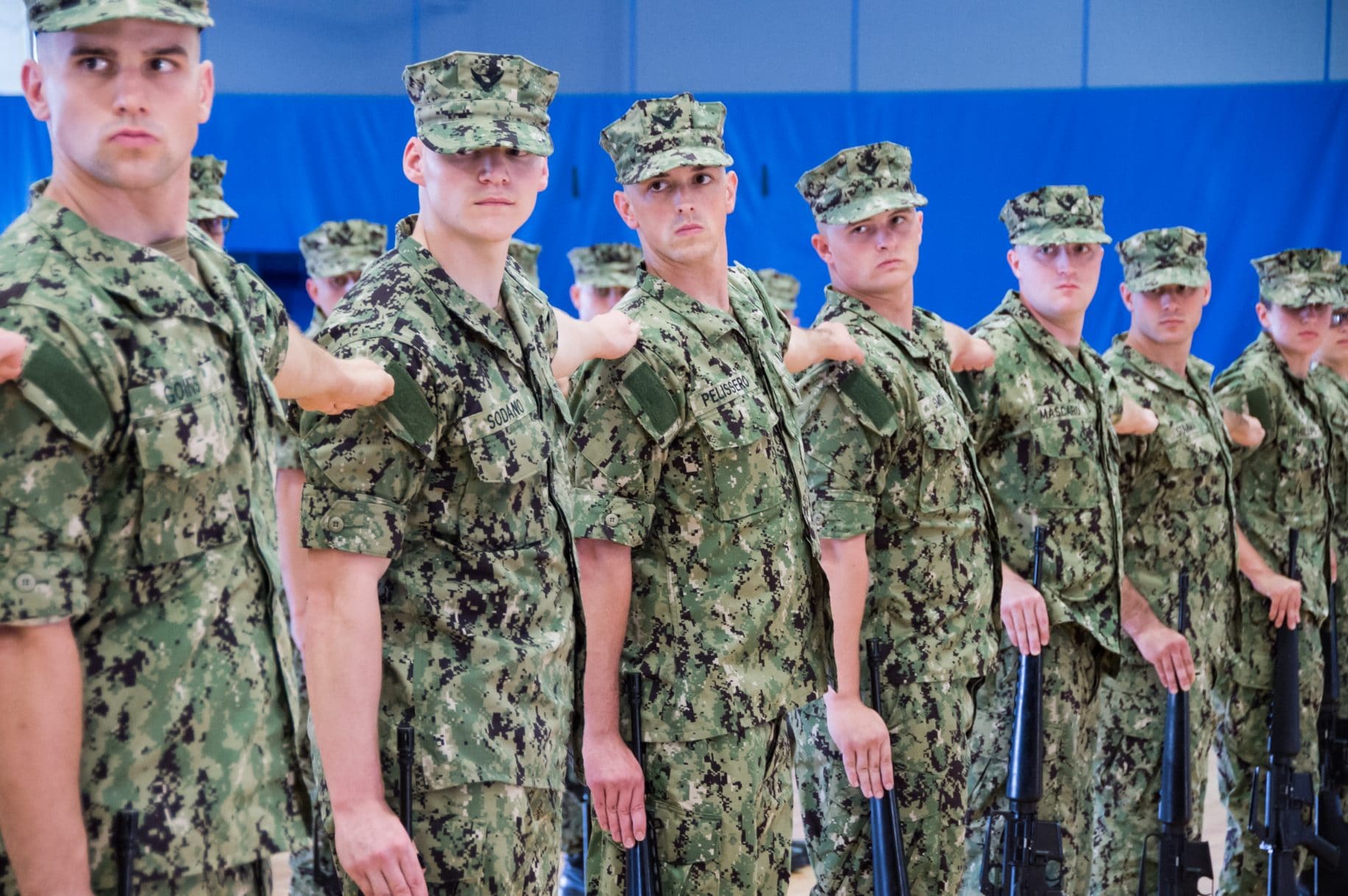The U.S. Navy officially ended its blue camouflage uniforms on Oct. 1 and switched to a green camouflage already worn in Navy SEAL and explosive ordnance disposal units.
The U.S. Navy implemented the blue camouflage —often referred to as “blueberries”— in 2008, but it has been eyeing a change since 2016 to adopt the green pattern of its expeditionary units as a universal pattern for all of its service members, The Virginian-Pilot reported.

Lt. Alan Dransfield, an Officer Development School student and dental corps officer from Tallahassee, Fla., conducts a pre-graduation inspection of members from his class at Officer Training Command. The school provides staff corps and restricted line officers with the training necessary to prepare them to succeed in their roles as newly commissioned naval officers. (U.S. Navy photo by Scott A. Thornbloom/Released)
Active-duty sailors reportedly received an increase in their annual uniform replacement allowance to facilitate the purchase of their new uniforms, designated as the Navy Working Uniform Type III.

Officer Candidate School (OCS) class 03-20 practices drill and ceremony, Sept. 23, 2019. OCS develops civilians and fleet Sailors into newly commissioned offers morally, mentally, physically and imbue them with the highest ideals of honor, courage and commitment in order to prepare graduates for service in the fleet as Naval officers. (U.S Navy photo by Darwin Lam/Released)
The blue camouflage was designated Navy Working Uniform Type I.
“The NWU Type I pioneered the Navy into the accepted wear of camouflage style uniforms — something that history reflects has been long desired by Sailors,” a U.S. Navy said in a statement obtained by The Virginian-Pilot. “The NWU Type I served its purpose for its era and now the Navy is transitioning forward.”
Along with providing all sailors with the Type III pattern first worn by the Navy SEALs, the Navy is evaluating a variety of additional uniform changes, including female skirts and slacks, more comfortable boots, flame-resistant camouflage, and a maternity white blouse and physical training shirt and shorts.
“We can’t speculate about what will be next, but we continue to review all uniforms and stay abreast of uniform developments by our sister Services and the textile industry,” the Navy statement said.
The Navy has also begun to move away from red “misconduct” stripes on the dress uniforms of senior enlisted sailors. The red stripes of the existing uniform policy were meant to indicate sailors had received nonjudicial punishment or court-martial within the previous 12 years.
Instead, all enlisted sailors who have exceeded the 12-year mark may wear gold stripes once reserved for those senior enlisted sailors who had maintained good conduct throughout their service.
The U.S. Air Force has recently adopted two-piece uniforms for aircrews, giving them a pair of pants and blouse, instead of a single-piece jumpsuit like the flight suits worn by aviators. The change reportedly extends the ability of aircrews to use either uniform, depending on which one may be best for a specific set of conditions.
In the past year, the U.S. Army has also begun a phased rollout of uniform changes that give modern Soldiers a dress uniform similar to the “pinks and greens” worn during World War II. The Army is looking at a slower phased roll-out of their new dress uniforms, with uniforms being issued to new Soldiers entering their first units in 2020 and then later on to the rest of the Army within 8 years.



